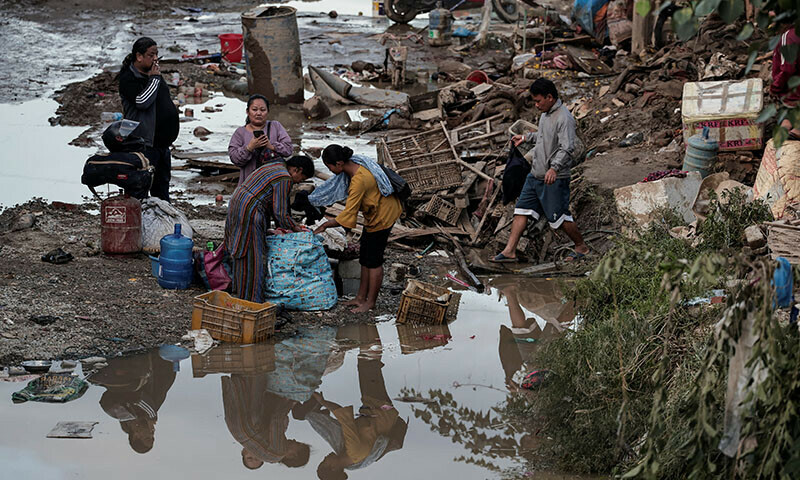
[ad_1]

Search and rescue teams in Nepal’s capital picked through wrecked homes on Monday after waters receded from monsoon floods that killed at least 192 people around the Himalayan republic.
Deadly floods and landslides are common across South Asia during the monsoon season from June to September, but experts say climate change is making them worse.
Entire neighbourhoods in Kathmandu were inundated after the heaviest rains in more than two decades, with the capital temporarily cut off from the rest of Nepal after landslides blocked highways.
“Our focus is on search and rescue, including people who have been stranded on highways,” home ministry spokesman Rishi Ram Tiwari told AFP.
“192 people have been reported dead, and another 31 are missing,” he added.
At least 35 of those killed were buried alive when earth from a landslide careened into vehicles on a highway south of Kathmandu, Nepal Police spokesman Dan Bahadur Karki told AFP.
Rescuers in knee-high rubber boots, meanwhile, were using shovels to clear mud from the worst-hit riverside neighbourhoods around Kathmandu, many of them unauthorised slum settlements.
The International Centre for Integrated Mountain Development, a Nepal-based think tank, said the disaster had been made worse by unplanned urban encroachment around the Bagmati River, which courses through the capital.
Nepal’s army said that more than 4,000 people had been rescued, with helicopters, motorboats and rafts used to bring stranded households to safety.
Bulldozers were being used to clear nearly two dozen sections of major highways leading into Kathmandu that had been blocked by debris.
‘All of it is stuck’
Merchants in Kathmandu said that damage to intercity roads had drastically cut the supply of fresh fruit and vegetables into the capital.
“The farmers have their produce ready but with the highways blocked, all of it is stuck,” Binay Shrestha, who works at one of the city’s main produce markets, told AFP.
Nepal’s weather bureau said preliminary data from stations in 14 districts measured record-breaking rain in the 24 hours to Saturday morning.
A monitoring station at the Kathmandu airport recorded about 240 millimetres (9.4 inches) of rain, the highest figure since 2002.
The summer monsoon from July to September brings South Asia 70-80 per cent of its annual rainfall and is vital for agriculture and food production in a region home to around two billion people.
But monsoon rains also bring widespread death and destruction in the form of floods and landslides.
Experts say climate change has worsened their frequency and intensity.
More than 300 people have died in Nepal in rain-related disasters this year.
Pakistan ‘ready to extend help’: PM Shehbaz
Prime Minister Shehbaz Sharif said he was “deeply saddened” by the loss of life in the floods.
“Our heart goes out to KP Sharma Oli and the people of Nepal at this difficult time,” he said in a statement on X, referring to his Nepalese counterpart.
“Having suffered calamitous floods ourselves in 2022, Pakistan stands in full solidarity with Nepal and is ready to extend any help necessary,” he added.
[ad_2]
Source link






